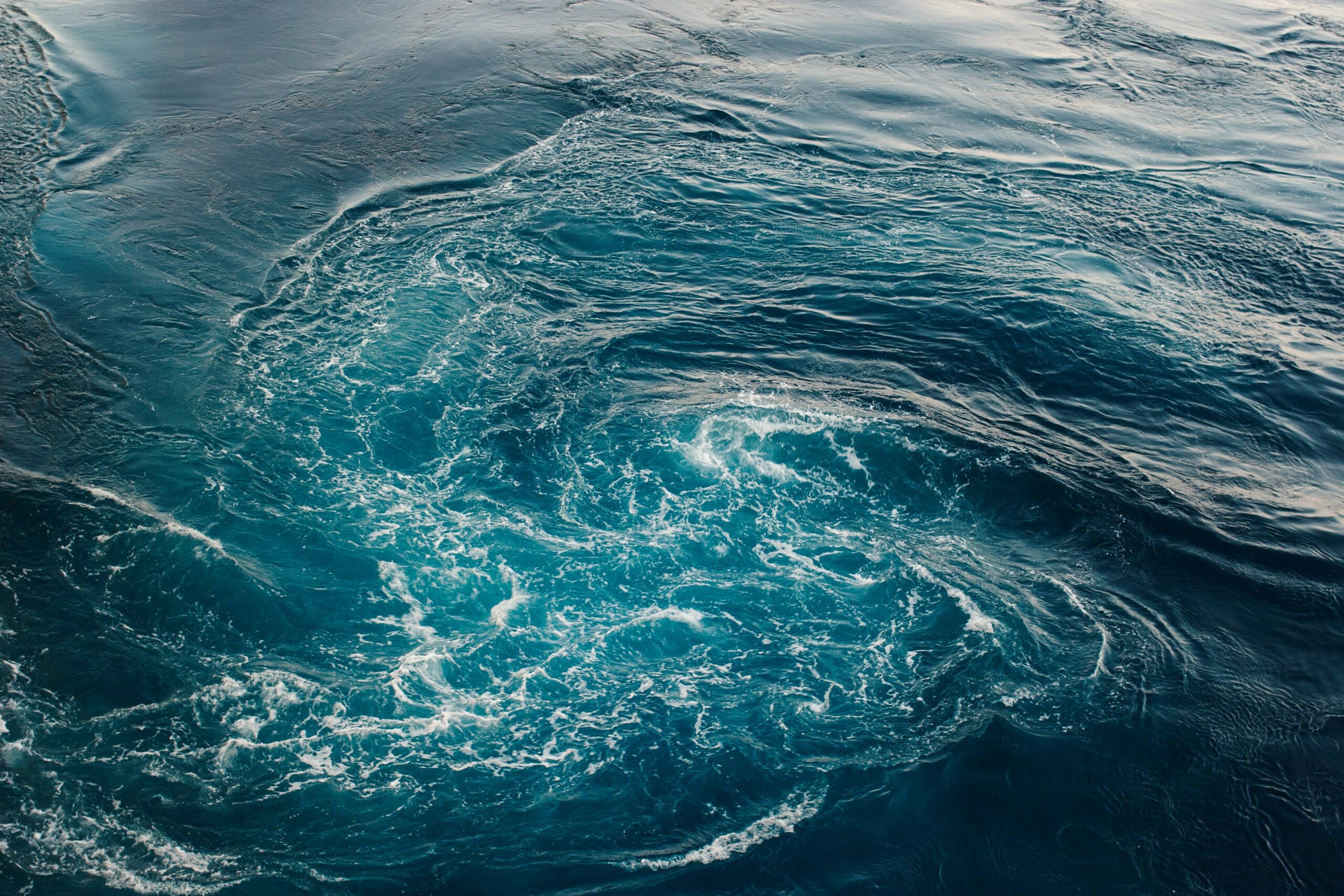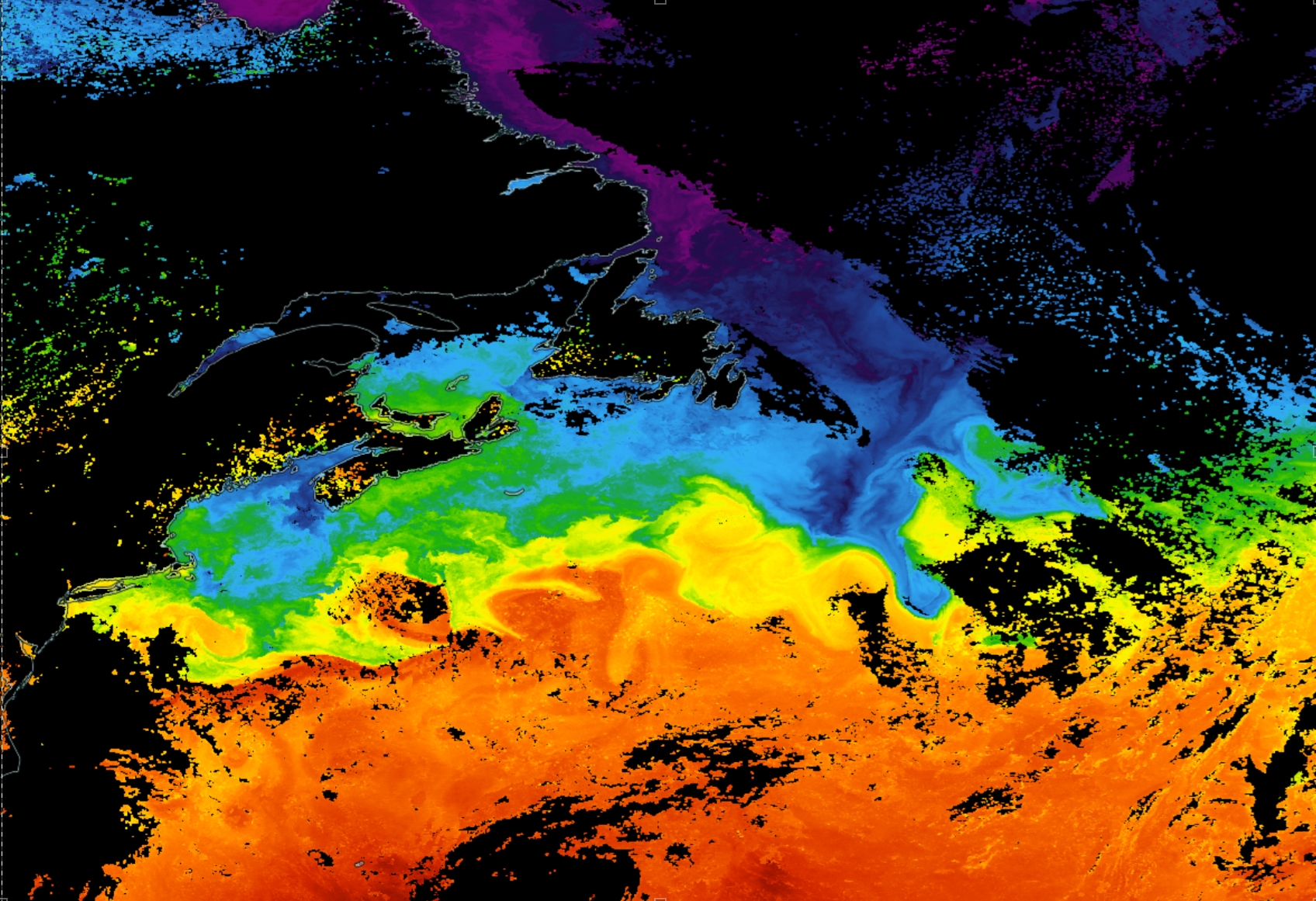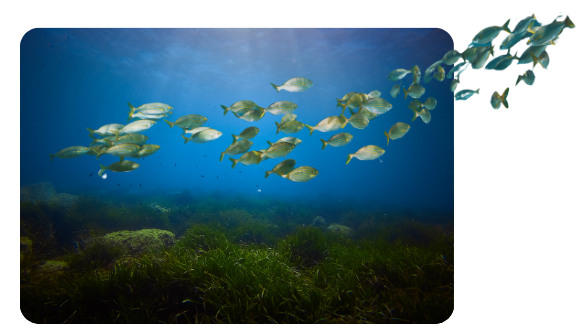Story
Ocean whirlpools reveal shifting patterns in plankton life across the North Atlantic
18 November 2025
New research uncovers how huge circular rotating currents – known as ocean mesoscale eddies – are reshaping plankton communities as the climate changes.

The ocean is far from still – along with its currents and gyres, it is alive with vast spinning whirlpools called mesoscale eddies, each spanning hundreds of kilometres.
Mesoscale eddies can form when part of a main current becomes separated, or through internal ocean instabilities, which form circular rotating currents that propagate across the ocean, lasting for weeks or even months.
These eddies mix, stir and transport water, nutrients and marine life, and modify the ocean properties of the water captured within them. Eddies play a crucial yet often overlooked role in shaping ocean ecosystems and even affect the net exchange of carbon between this water and the atmosphere.
A new study published led by Dr Guiyan Han, which took place during her time on a placement at Plymouth Marine Laboratory, and co-authored by PML’s Dr Graham Quartly, reveals how these dynamic oceanic features influence zooplankton – the tiny marine animals that form the basis of the marine food web, and play a huge role in global carbon cycling.
Using decades of data from the Continuous Plankton Recorder (CPR) survey, alongside satellite observations, they tracked how zooplankton communities respond to the presence of cyclonic and anticyclonic eddies – swirling ocean currents that spin in opposite directions – across different latitudes in the North Atlantic.
They developed a new Abundance Index to better capture changes in both the quantity and diversity of zooplankton. Their analysis showed that the relationship between plankton and eddies isn’t uniform – it varies dramatically depending on latitude and ocean conditions.
In southern and northern regions, zooplankton were generally more abundant within cyclonic eddies, which draw nutrient-rich waters upward to fuel blooms of phytoplankton – a vital food source. But in mid-latitude regions, the pattern reversed, with higher zooplankton abundance found inside anticyclonic eddies, where warmer, more stable conditions may support greater vertical movement and reproduction.

Image: Mesoscale eddies can be observed in this daily snapshot (August 24th 2015) of sea surface temperature in the North Atlantic (provided by NASA).
Interestingly, the study also found that food availability, indicated by surface chlorophyll levels, had a stronger influence on zooplankton abundance than temperature – especially in northern waters.
Long-term trends revealed important shifts: since around 2005, the mid-latitude North Atlantic has seen a significant increase in zooplankton abundance, suggesting that changing ocean conditions and climate-driven variability could be altering the balance between eddy types and their ecological effects.
Dr Quartly explained:
“These spinning eddies are like miniature laboratories in the sea, each with its own conditions that can either nurture or reduce marine life. By combining satellite data with the remarkable CPR time series, we can see how these processes differ across the North Atlantic and how they may be evolving in a changing climate.”
Dr Guiyan Han, lead author, added:
“In the marine food chain, zooplankton serve as a bridge linking phytoplankton and nekton. Investigating the responses of zooplankton communities to mesoscale eddies will not only enhance our understanding of how eddy-affected marine environments impact zooplankton but also provide insights for future research on eddy-fish interactions—how these large, motile, and “behaviourally flexible” organisms actively select eddy habitats is undoubtedly of great interest.”
The findings highlight the complexity of physical–biological interactions in the ocean and underscore the importance of long-term, basin-scale monitoring for understanding and predicting ecosystem change.
